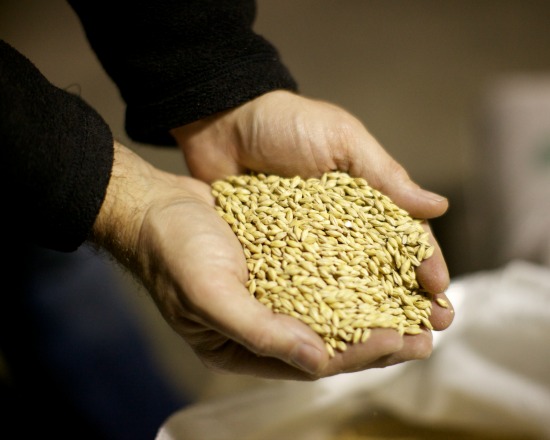“I’m really excited about this,” says Kelly Taylor, perched atop a steam-spewing, 30-barrel brewhouse at Brooklyn’s Greenpoint Beer Works, home of KelSo Beer Company.
“This” isn’t referring to KelSo’s recent foray into cans, which currently includes Pilsner and Nut Brown Lager, or an ambitious project to age Industrial IPA in a slew of different cabernet sauvignon barrels.
“This” is KelSo’s newest beer, “Edible Ale,” which will launch a quarterly, locally inspired series with Edible Manhattan, Brooklyn, Long Island and East End. The series will feature beers containing different New York–sourced ingredients, serving as a “microphone for what we both believe in very strongly,” says Taylor, co-owner and brewmaster.
It’s an ale for awareness. An alewareness, perhaps…
Taylor, who is also brewmaster of Heartland Brewery, launched KelSo with his wife, Sonia Giacobbe, in 2006. The brewery’s slogan is “Beer Helps.”
The genesis of Edible Ale began on September 27, during Edible Manhattan‘s screening of A Place at the Table at The Times Center. The film was “an eye-opener,” says Taylor, “about our country’s problem with access to nutritional food.” The objective is “to get people talking and, hopefully, to get retailers to donate a portion of every beer sale to organizations working to educate about healthier, local food, like NYC Coalition Against Hunger and City Harvest.”
Taylor initially wanted to create an all–New York beer, but “that amount of ingredients wasn’t available, so it’s about 75 percent local.” This includes hops—Chinook and Cascade—from Pedersen Farms in Seneca Castle, and malt—caramel and pale—from O’Mara Farms in Canastota. Triticale, a hybrid of wheat and rye, is also grain-featured in Edible Ale. It was grown and malted by Hadley, Massachusetts’s Valley Malt.
“Triticale combines the breadiness of wheat with the spiciness of rye and has a really soft texture,” says Taylor. “[Edible Ale] will definitely be hoppy, but we’re going for balance. It’s basically a red IPA.”
KelSo created the first batch of Edible Ale on December 6, and Taylor anticipates readiness “sometime in early January.” The name will remain Edible Ale for subsequent batches, but its recipe will differ with every release, dependent on availability of ingredients, and Edible magazine’s theme.
“If the issue is featuring, say, local fisherman, we may do an oyster stout,” says Taylor. “The possibilities are basically endless.”



